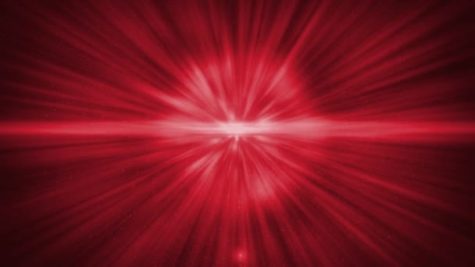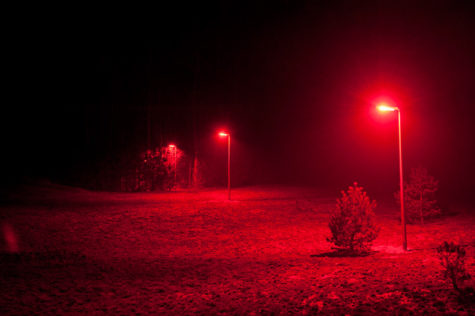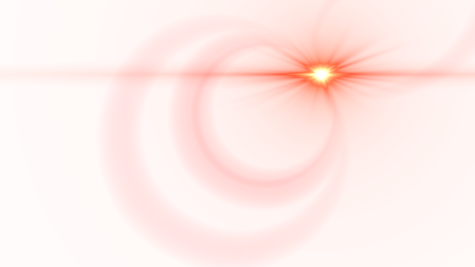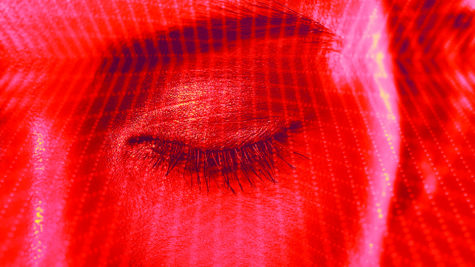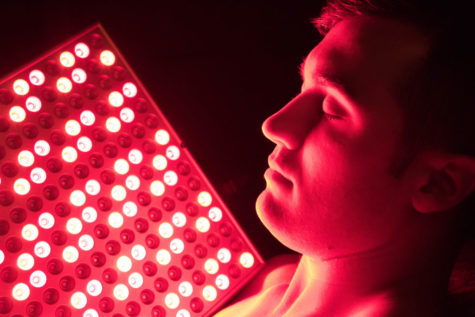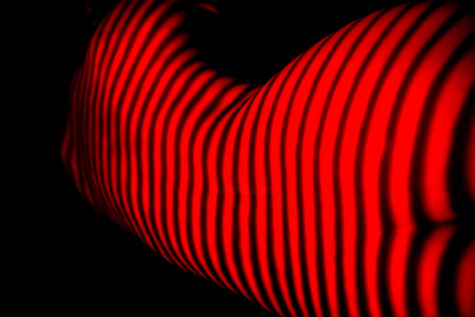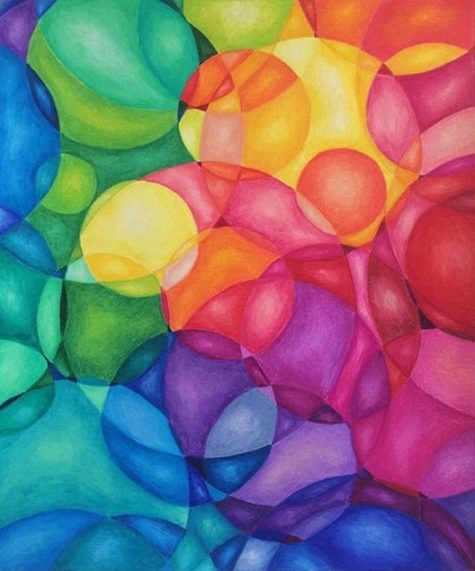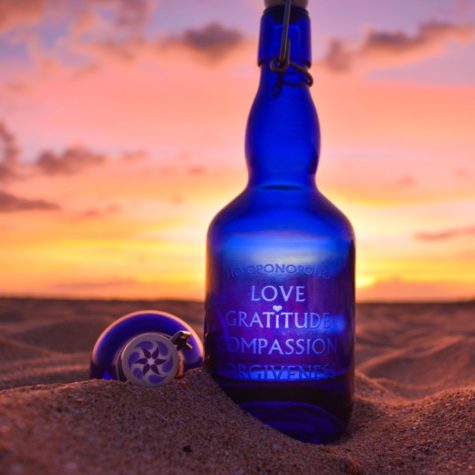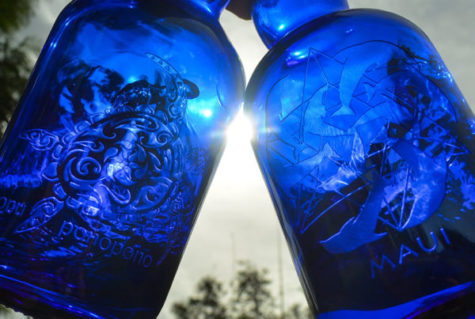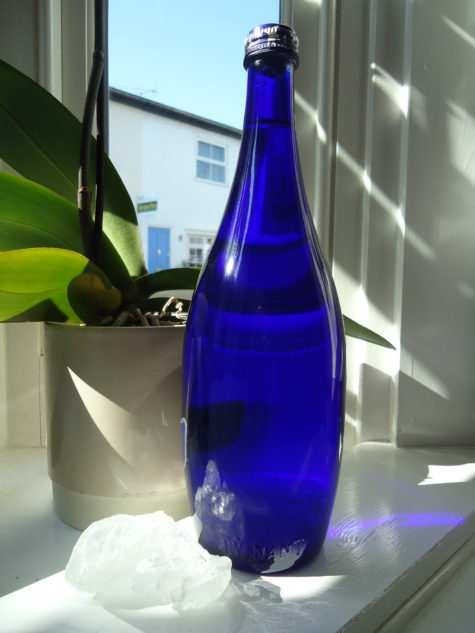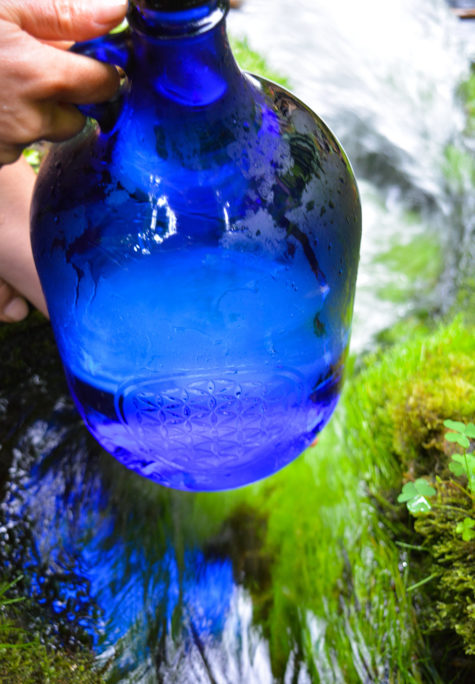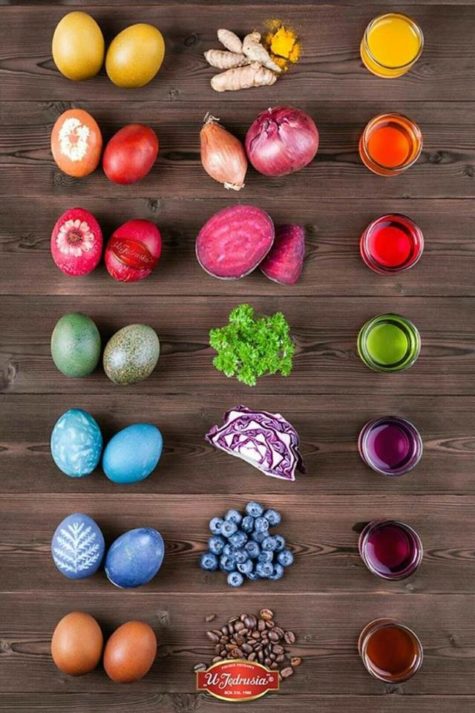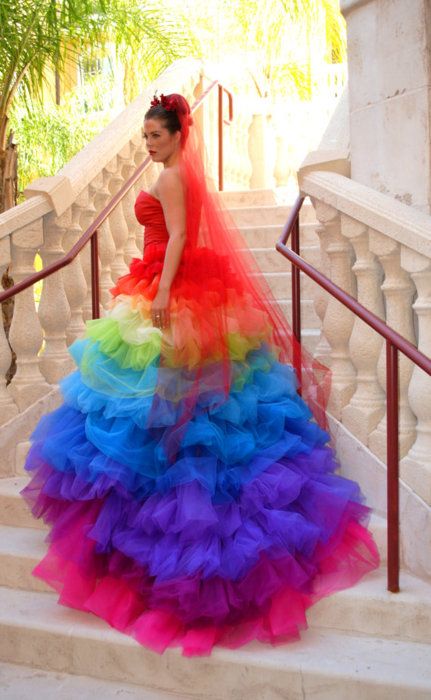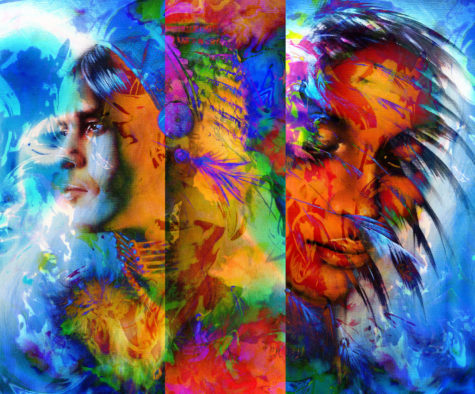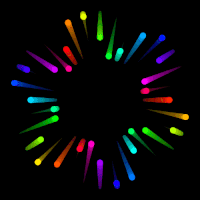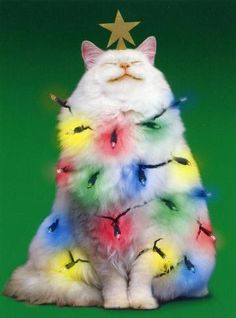Red Light For Your Eyes
Declining eyesight can be improved by looking at red light, pilot study says. Red lights can help prevent damage to mitochondria in the retina, which leads to declining eyesight. It will be as easy as brushing your teeth or shaving, and as long as future studies support it, it just might save your eyesight.
Here’s the scoop on it from CNN:
A few minutes of looking into a deep red light could have a dramatic effect on preventing eyesight decline as we age, according to a new study published this week in The Journals of Gerontology.
If the results are replicated in future studies, and approved by the US Food and Drug Administration, the light could augur a new era in which millions of people have access to the easy home-based therapy. It would give them a new layer of protection against the natural aging processes that steal our eyes’ sensitivity to light and ability to distinguish colors.
“You don’t need to use it for very long to start getting a strong result,” said lead author Glen Jeffery, a professor of neuroscience at University College London’s Institute of Ophthalmology.
The science works, Jeffery said, because the light stimulates the health of mitochondria, which are like batteries in our cells.
And because mitochondria are implicated in a broad range of diseases, insights like these could help lead to new treatments for diseases including Parkinson’s and diabetes.
All it takes is a few minutes.
The study was small, a pilot study to test the concept. Researchers recruited 12 men and 12 women, whose ages ranged from 28 to 72. Each participant was given a small handheld flashlight that emitted a red light with a wavelength of 670 nanometers. That wavelength is toward the long end of the visible spectrum, and just short of an infrared wavelength, which tends to be invisible to the human eye.
They spent three minutes each day looking into the light over a period of two weeks.
The lights work on both cones and rods in the eye. Cones are photo receptor cells that detect color and work best in well-lit situations. Rods, which are much more plentiful, are retina cells that specialize in helping us see in dim light, according to the American Academy of Ophthalmology.
Researchers measured the cone function in subjects’ eyes by having them identify colored letters with low contrast. And they measured their eyes’ rod sensitivity by asking them to detect light signals in the dark.
There was a 14% improvement in the ability to see colors, or cone color contrast sensitivity, for the entire two dozen participants.
Improvement, however, was most significant in study participants over age 40. For those ages, cone color contrast sensitivity rose by 20% over the course of the study.
That age bracket also saw significant increases in rod threshold, which corresponds to the ability to see in low light. Study participants under 40 also experienced some improvement, but didn’t see the same jump as older subjects. Younger eyes haven’t declined as much as older eyes.
“The retina ages faster than any other organ in your body,” Jeffery said. “From an evolutionary perspective, we fundamentally have never lived past 40.”
Now, of course, we regularly live well beyond that age, and need ways to nurture the organs that for millennia have been the most likely to wear out earliest in life.
Researchers from University College London used small red lights like this one to stimulate retina mitochondria with the goal of stoppying eyesight loss.
Adults ages 40 and higher are are at the highest risk for eye diseases such as cataracts, diabetic retinopathy, glaucoma and age-related macular degeneration, according to the US Centers for Disease Control and Prevention.
These diseases can occur in young people but their prevalence increases with age. At the beginning stages, these conditions are treatable, although they can start creeping in before symptoms appear.
That’s why the AAO recommends increasing regular eye exams to every two to four years for people once they cross age 40, and to increase exams to every one to two years at age 65.
The CDC notes that the progression of these diseases can also be slowed by eating a diet rich in antioxidants and maintaining normal levels of blood sugar, body weight and blood pressure. If those indicators get out of normal range, they can further degeneration by breaking down blood vessels in the eyes, the American Heart Associations says.
It’s easy and safe to use
This new study in humans builds on results in fruit flies and in mice, which also showed that red light could improve the functioning of mitochondria.
For instance, a 2015 study showed that near-infrared light could spur energy production, improve mobility and extend the lifespan of fruit flies. And a 2017 study of visible red light at the edge of infrared reported a 25% improvement in the functioning of retinas in mice.
Longer-term independent safety studies of red lights in humans would have to garner similar benefits for this method of eyesight protection to be approved by the FDA. If so, you’d still need to use a properly vetted product under a doctor’s supervision.
For example, while the laser pointers approved by the FDA for sale in the US don’t cause eye damage, a 2018 case study in the New England Journal of Medicine outlined how a boy in Greece permanently injured an eye by pointing a green laser pointer into it.
One of the best assets of the red lights they used is that they are safe, Jeffery said. The researchers all tested the red lights on their own eyes before beginning the study and have found no ill effects.
The research subjects in the study also reported no ill effects. “If you use this every day, we have no evidence to say it’s detrimental,” Jeffery said.
That fits with prior research, in which the safety of red lights has long been established, explained Dr. Raj Maturi, an associate professor at Indiana University School of Medicine. It would be a very easy pathway to FDA approval,” he said. But more studies are needed to prove it helps. Although these lights aren’t harmful, Maturi wasn’t ready to embrace the idea that they’re incredibly helpful either.
This pilot study lacked a control group of patients who could have been exposed to a dummy light that emitted, he noted. The results found in this small study of 24 participants might not bear out in the larger population. Of the subjects over 40 in this study, individual characteristics of a few of them would be enough to make the eyesight improvements look stronger than they actually are.
“The data set could be brought down by three or four subjects,” he said. And while participants improved in how they saw the blue color axis, Maturi pointed out that they didn’t have statistically significant gains in how they saw the red color axis. To really test these insights, it’ll take a double-blind controlled study with a larger group of subjects and longer monitoring over time.
LED lights could help with many diseases
LED lights work in this arena because of what scientists call the mitochondrial theory of aging, in that humans and animals age as damage accumulates in mitochondria and mitochondrial DNA.
Therefore stimulating mitochondria to reduce damage is a way of slowing aging in general. Our retinas are chock-full of mitochondria — the highest concentration of mitochondria of any part of the body.
That’s a main reason why Jeffery and his colleagues sought to test out the red lights in a specific area of aging such as eyesight decline. Mitochondria absorb longer wavelengths of light, making the near-infrared light their preferred choice to test.
Red lights can improve function in a range of diseases, particularly in the mitochondria in those undergoing aging with conditions such as Parkinson’s, he noted. “Every disease could have a mitochondrial angle,” Jeffery said. “In diabetes, for instance, your mitochondria are very upset.”
Each application carries that same human desire to fend off processes that are both natural and universal. “We’re all going to suffer from aging. So let’s try to go gently if we can,” he said.
Red Light Therapy
Red light therapy (RLT) is a treatment that may help skin, muscle tissue, and other parts of your body heal. It exposes you to low levels of red or near-infrared light. Infrared light is a type of energy your eyes can’t see, but your body can feel as heat. Red light is similar to infrared, but you can see it.
Red light therapy is also called low-level laser therapy (LLLT), low-power laser therapy (LPLT), and photobiomodulation (PBM).
How Does Red Light Therapy Work?
With red light therapy, you expose your skin to a lamp, device, or laser with a red light. A part of your cells called mitochondria, sometimes called the “power generators” of your cells, soak it up and make more energy. Some experts think this helps cells repair themselves and become healthier. This spurs healing in skin and muscle tissue.
Red light therapy uses very low levels of heat and doesn’t hurt or burn the skin. It’s not the same type of light used in tanning booths, and it doesn’t expose your skin to damaging UV rays.
What Does It Treat?
Researchers have known about red light therapy for a while. But there aren’t a lot of studies on it, and they don’t know if it’s better than other types of treatment used to help you heal. Red light therapy may help with:
- Dementia.
In one small study, people with dementia who got regular near-infrared light therapy on their heads and through their noses for 12 weeks had better memories, slept better, and were angry less often.
- Dental pain.
In another small study, people with temporomandibular dysfunction syndrome (TMD) had less pain, clicking, and jaw tenderness after red light therapy.
- Hair loss.
One study found that men and women with androgenetic alopecia (a genetic disorder that causes hair loss) who used an at-home RLT device for 24 weeks grew thicker hair. People in the study who used a fake RLT device didn’t get the same results.
- Osteoarthritis.
One study found red and infrared light therapy cut osteoarthritis-related pain by more than 50%.
Tendinitis. A very small study of 7 people suggests RLT lessens inflammation and pain in people with Achilles tendinitis.
Wrinkles and other signs of skin aging and skin damage. Research shows RLT may smooth your skin and help with wrinkles. RLT also helps with acne scars, burns, and signs of UV sun damage.
What Are the Risks?
Red light therapy is generally considered safe, even though researchers aren’t exactly sure how and why it works. And there are no set rules on how much light to use. Too much light may damage skin tissue, but too little might not work as well.
Where Do You Get Red Light Therapy?
It’s usually done in a doctor’s office. But some salons and dental offices do it, too. You can also buy your own red light therapy device. Salon and at-home treatments are more likely to cause side effects or injury. Talk to your doctor if you’re thinking about red light therapy.
Source: Web MD
Colors For Curses
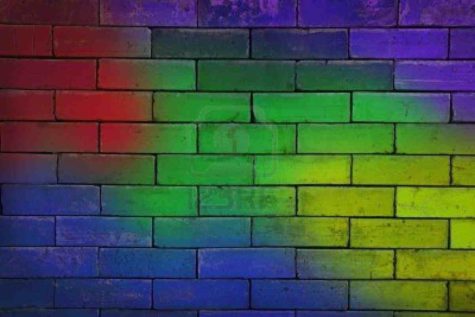
Here is a list of the five useful colors for dark magick. These can be used for candles, mojo bags, etc.
- Red: Hotfoot, Speed, Anger, Violence
- Black: General Curses, Death, Bad Luck
- Purple: Domination, Loss of Power, Addiction
- Yellow: Legal Troubles, Lose Favor, Illness in the Belly
- Green: Sickness, Loss of Money, Rot and Decay
Note: Curses, hexes, jinxes, and other negative spell work should not be undertaken lightly, and are not recommended as they have a tendency to blow back on the person casting the spell.
Source: Hoodoo Delish
The Meaning of Colors
Here is a quick overview of the various colors and their meanings:
Red
Red is the color of fire and blood, so it is associated with energy, war, danger, strength, power, determination as well as passion, desire, and love. Red is a very emotionally intense color. It enhances human metabolism, increases respiration rate, and raises blood pressure.
- It has very high visibility that’s why stop signs, stoplights, and fire equipment are usually painted red.
- In heraldry, red is used to indicate courage. It is the color found in many national flags.
Orange
Orange combines the energy of red and the happiness of yellow. It is associated with joy, sunshine, and tropics. Orange represents enthusiasm, fascination, happiness, creativity, determination, attraction, success, encouragement, and stimulation.
- To the human eyes, orange is seen as a very hot color, so it gives the sensation of heat.
- Orange increases oxygen supply to the brain, produces an invigorating effect, and stimulates mental activity. It is highly accepted among young people.
- As a citrus color, orange is associated with healthy food and stimulates appetite.
- Orange is the color of fall and harvest.
- In heraldry, orange is symbolic of strength and endurance.
- Orange has very high visibility, so you can use it to catch attention and highlight the most important elements of your design.
- Orange is very effective for promoting food products and toys.
- Dark orange can mean deceit and distrust.
- Red-orange corresponds to desire, passion, pleasure, domination, aggression, and thirst for action.
Yellow
Yellow is the color of sunshine. It’s associated with joy, happiness, intellect, and energy. Yellow produces a warming effect, arouses cheerfulness, stimulates mental activity, and generates muscle energy.
- When overused, yellow may have a disturbing influence; it is known that babies cry more in yellow rooms.
- In heraldry, yellow indicates honor and loyalty. Later the meaning of yellow was connected with cowardice.
- Dull (dingy) yellow represents caution, decay, sickness, and jealousy.
- Light yellow is associated with intellect, freshness, and joy.
Green
Green is the color of nature. It symbolizes growth, harmony, freshness, and fertility.
- Sometimes green denotes lack of experience; for example, a ‘greenhorn’ is a novice.
- In heraldry, green indicates growth and hope.
- Dark green is associated with ambition, greed, and jealousy.
- Yellow-green can indicate sickness, cowardice, discord, and jealousy.
- Olive green is the traditional color of peace.
Blue
Blue is the color of the sky and sea. It is often associated with depth and stability. It symbolizes trust, loyalty, wisdom, confidence, intelligence, faith, truth, and heaven. Blue is considered beneficial to the mind and body. It slows human metabolism and produces a calming effect.
- Blue is strongly associated with tranquility and calmness.
- In heraldry, blue is used to symbolize piety and sincerity.
- You can use blue to promote products and services related to cleanliness (water purification filters, cleaning liquids), air and sky (airlines, airports, air conditioners), water and sea (sea voyages, mineral water).
- Blue is linked to consciousness and intellect.
- Blue is a masculine color; according to studies, it is highly accepted among males.
- Dark blue is associated with depth, expertise, and stability; it is a preferred color for corporate America.
- Avoid using blue when promoting food and cooking, because blue suppresses appetite.
- When used together with warm colors like yellow or red, blue can create high-impact, vibrant designs; for example, blue-yellow-red is a perfect color scheme for a superhero.
- Light blue is associated with health, healing, tranquility, understanding, and softness.
- Dark blue represents knowledge, power, integrity, and seriousness.
Purple
Purple combines the stability of blue and the energy of red. Purple is associated with royalty. It symbolizes power, nobility, luxury, and ambition.
- It conveys wealth and extravagance.
- Purple is associated with wisdom, dignity, independence, creativity, mystery, and magic.
- Almost 75 percent children prefer purple to all the other colors.
- Purple is a very rare color in nature; some people consider it to be artificial.
- Light purple evokes romantic and nostalgic feelings.
- Dark purple evokes gloom and sad feelings. It can cause frustration.
White
White is associated with light, goodness, innocence, and purity. It is considered to be the color of perfection. White means safety, purity, and cleanliness. As opposed to black, white usually has a positive connotation.
- White can represent a successful beginning.
- In heraldry, white depicts faith and purity.
- In advertising, white is associated with coolness and cleanliness because it’s the color of snow.
- You can use white to suggest simplicity in high-tech products.
- White is an appropriate color for charitable organizations
- Angels are usually imagined wearing white clothes.
- White is associated with hospitals, doctors, and sterility, so you can use white to suggest safety when promoting medical products.
- White is often associated with low weight, low-fat food, and dairy products.
Black
Black is associated with power, elegance, formality, death, evil, and mystery. Black is a mysterious color associated with fear and the unknown (black holes).
- It usually has a negative connotation (blacklist, black humor, ‘black death’).
- Black denotes strength and authority; it is considered to be a very formal, elegant, and prestigious color (black tie, black Mercedes).
- In heraldry, black is the symbol of grief.
- Black gives the feeling of perspective and depth, but the black background diminishes readability.
- A black suit or dress can make you look thinner.
- When designing for a gallery of painting or photography, you can use a black or gray background to make other colors stand out.
- Black contrasts well with bright colors. Combined with red or orange – other very powerful colors – black gives a very aggressive color scheme.
Other Colors:
- Pink signifies romance, love, and friendship. It denotes feminine qualities and passiveness.
- Brown suggests stability and denotes masculine qualities.
- Gold evokes the feeling of prestige. The meaning of gold is illumination, wisdom, and wealth. Gold often symbolizes high quality.
- Aqua is associated with emotional healing and protection.
Submitted by Raetta Parker
Blue Solar Water
Blue Solar Water is easy to make, delicious to drink and is very a powerful tool for healing the body and spirit.
As we know, water carries vibrations, energy frequency, crystals, colors… Blue solar water provides the best: the powerful energy of the sun, the source of all life, and the fascinating properties of the healing and calming blue color. This water has become a favorite and popular after the book Zero Limits by Dr. Hew Len and above all through Ho’oponopono, an ancient Hawaiian healing technique.
In addition to being extremely healthy, this water helps cleanse the deep negative subconscious programs that we automatically repeat over and over again. Blue solar water heals emotional wounds and blockages, takes them to the surface and relieves us from them so that we get reset back to zero, in a pure state, to a clean start, without the background noise of negative thoughts. This water meets positivity, peace and love. And everyone can drink it, children, sick with cancer, especially those on chemotherapy. It is even tastier than plain water. And it is very easy to make.
Why blue?
Blue is the color of the fifth chakra, the so-called power center or the throat chakra (Vishuddha). The throat chakra is extremely important because it is the way through which energy from the higher energy centers can move to the lower ones and vice versa. It is the first center of higher frequencies and only when it is completely clean and open, we can reach higher states of consciousness. It is a bridge between the physical and the spiritual world, between the heart and the mind. It separates the secular from the sacred and transmitters the intention of the soul.
And it has been scientifically proven that the color blue has a tremendously powerful impact on our brains, decision-making and behavior.
Blue sky means a nice, relaxing day. Clean calm blue sea means calmness and serenity. In fact, everything blue symbolizes trust, loyalty, wisdom, confidence, intelligence, faith, truth, and heaven. Krishna is blue.
Science says it’s no coincidence these blue things make all of us us feel so good. After all, blue is the only color spectrum that can effectively prevent people from committing suicide.
It is proven that the color blue has a calming effect on people, and that is why it is used in different ways. In 2000, police in Glasgow, Scotland, installed blue lights in areas with a high crime rate. Since then, crime in those infamous neighborhoods decreased by 9%.
In Japan, several major railway companies switched to only blue lights at all railway crossings. To date they have a stunning success: In 2007, a year before the blue lights were installed, they had 640 suicides. In 2008, after the lights were installed, there were zero suicides!
If this is all strange and you do not believe in the incredible efficiency of blue, read on.
One theory says that the color itself has a tangible, biological effect on our brain chemistry. Harold Wohlfarth, president of the German Academy of Color Science, conducted a study in which he found that blue color lighting actually had a psychological impact on children and adults, and what is particularly bizarre in all things is the fact that it had the same effect even on blind people.
Wohlfarth believes that traces of electromagnetic energy from the blue light affects certain neurotransmitters in the brain. When light of a certain color falls on the eye, even if the eye is blind, it affects the gland that produces melatonin, which creates a chain reaction that elevates mood and calms emotions.
How to make Blue solar water?
All you need is a blue glass bottle (the shade of blue is not important) and fill it up with filtered, spring or plain tap water. You also need to make sure that the cap you seal the bottle with is not made of metal. It can be glass or plastic, but never use metal. The cap only serves as a protection against dust or insects that are very fond of this water.
This water bottle should be then kept on the sun for 1-12 hours. The longer you keep it on the sun, the sweeter its taste will get. But remember not to keep it longer than 12 hours.
How to drink it?
Drink this water as much as possible, it is very tasty and drinkable. Somehow, our body recognizes it, so even those who don’t drink so much water will have no problem drinking a few liters.
In addition to drinking it, you can use this water for cooking, watering flowers, for your animals, add it in the washing machine, dishwasher, put in a sprayer and refresh the rooms, add it to your bath…
Once you have made your Blue Solar Water you can transfer it into another container, plastic or glass, doesn’t matter. It can be kept in the refrigerator or at room temperature.
If you get really excited about the solar water, here are some other uses:
- Add some to your coffee, tea, cocoa, juice, etc
- Add Blue Solar Water to everything you cook, pasta, soup, oatmeal, scrambled eggs, etc.
- Add some Blue Solar Water to your washing machine when washing clothes
- Spray some in your dryer
- Add it to your radiator to make your car hummmm
- Add it to your bath water
- Spray yourself with Blue Solar water after showering
- Spray rooms with Blue Solar Water
- Gargle with it.
- Wash floors with it
- Wash your car with Blue Solar Water
From: Shift Frequency
Natural Easter Egg Dyes
Old Wedding Color Lore
Married in white,
You have chosen a right.
Married in blue,
Your lover is true.
Married in pink,
Your fortunes will sink.
Married in green,
You will not long be seen.
Married in yellow,
Ashamed of the fellow.
Married in brown,
You’ll live out of town.
Married in grey,
You’ll live far away.
Married in black,
You’ll wish you were back.
~Anon
The Healing Power of Color
How does using color in meditations increase and accelerate your ability to heal and transform energy? Renowned energy healer Aleta St. James explains this Life Shift technique…
Easy Ways To Use Color For Healing
Fill a ruby red colored glass with water and set it outside beneath the morning sun for two hours. Bring it inside and let it warm to room temperature and then slowly sip it. Visualize the water turning red as it flows down your throat and into your stomach. Since red rules energy, this is a terrific color cure for depression. It will also help shrink cancerous tumors.
Sit outside, slightly shaded from the sun, and visualize the sun’s rays pouring the color orange into your body. Imagine it seeping into your pores and soaking into your internal organs. Like red, orange rules energy, and this is an excellent treatment for sexual impotency and digestive ailments.
Sit outside, slightly shaded from the sun, and visualize yellow sunlight streaming into your head and brain. Yellow rules the mind, so if you need to prepare for an upcoming exam, this is an excellent intellectual stimulator.
Fill a green glass with water and set it outside in the morning sun. Let the sun’s rays heat the water for two hours. Bring it inside and let it warm to room temperature. Slowly sip the water. Green calms the nerves. If you have an important speech to give or an important project at work to complete, this is an excellent tranquilizer.
At sunrise, sit in a comfortable chair. Straighten your spine and close your eyes. Visualize a blue ray coming down from the ceiling and into your head. Imagine it traveling down your neck, through your arms, down your stomach and into your legs. Like green, blue calms your emotions, but it also soothes a romantic heartbreak or the grief of losing a loved one.
Use the color purple to heal wounds. If you have a wound, broken bones or pain, imagine the color purple seeping down into those areas. Feel its warming power. Purple also connects you with your spiritual center, so if you feel disconnected from your spirit, imagine breathing in a purple cloud, and imagine it totally filling your body.

